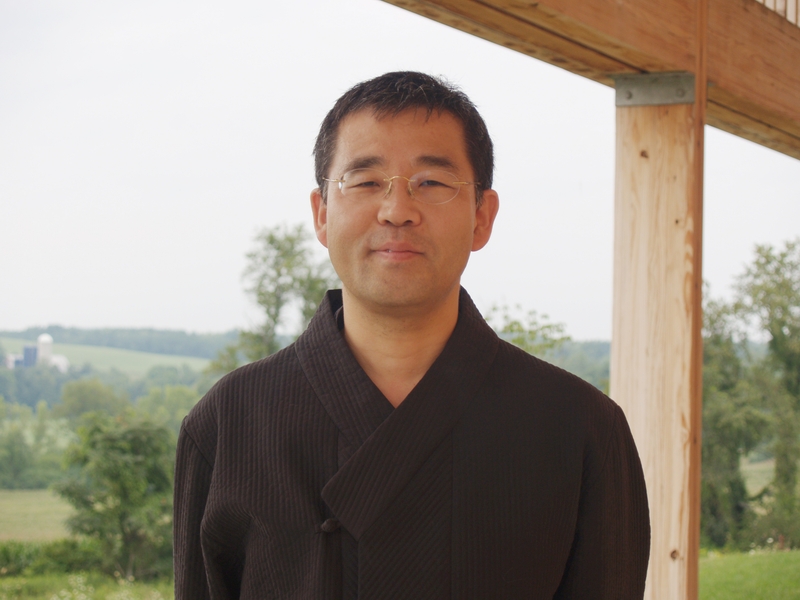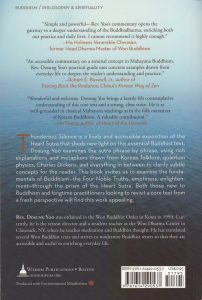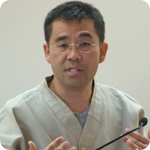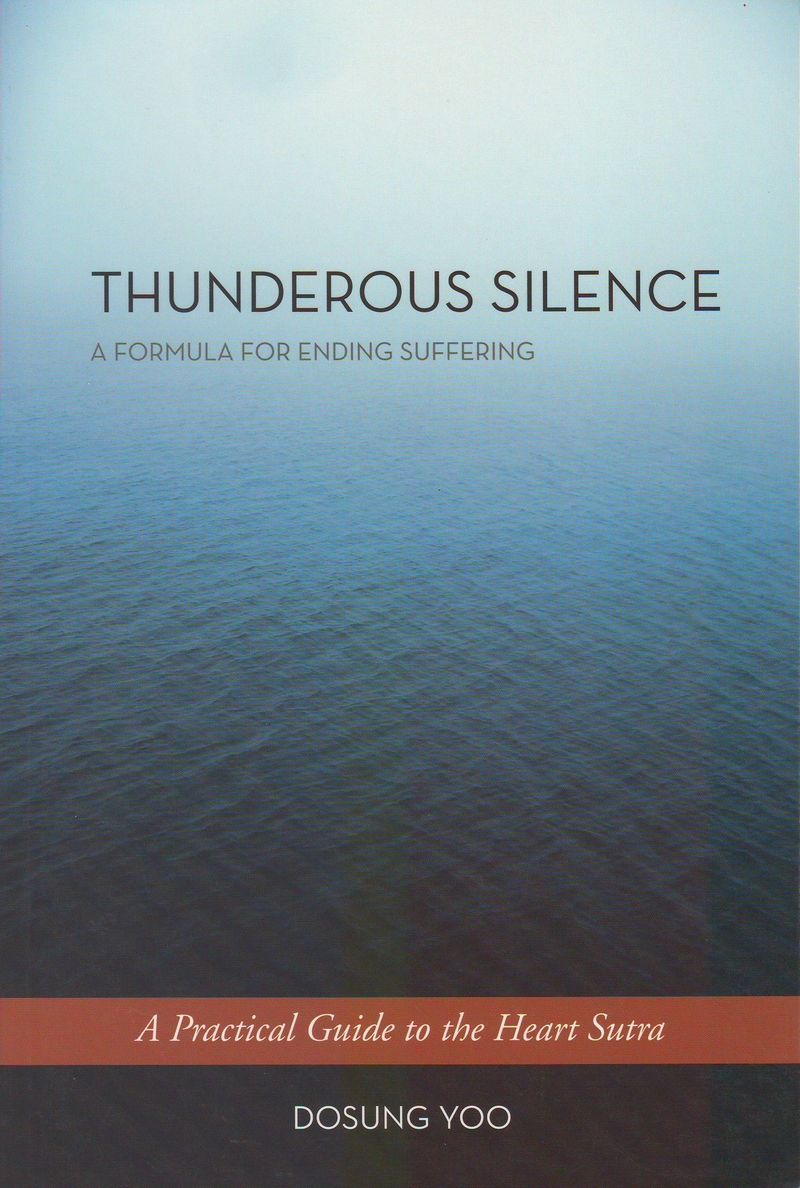The Heart Sūtra is the most well-known sutra in Mahāyāna Buddhism. Thunderous Silence is a contemporary and practical guide to the Heart Sutra.
The Heart Sūtra, belonging to the Perfection of Wisdom category of Mahāyāna Buddhism literature (Prajñāpāramitā), is perhaps the most prominent representative of the genre, along with the Diamond Sūtra.
Its original Sanskrit title, Prajñāpāramitāhṛdaya, can be translated as “The Heart of the Perfection of Wisdom”.
The text has been translated into English dozens of times from Chinese, Sanskrit and Tibetan, as well as other source languages.
There are many commentaries on this scripture, but my commentary differs from others, and is characterized by the following points: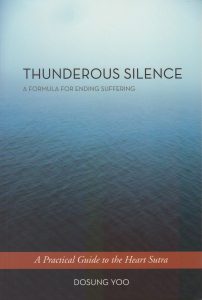
First, my commentaries are modern and practical so that readers can not only understand the idea of emptiness, but can also utilize the teachings to enrich their daily lives. For that purpose, each chapter ends with practical lessons. For example, the chapters which explain the emptiness of the self conclude with commentary on how and why the practice of meditation and working with koans are vital. Chapter 6, “Emptiness of Phenomena,” concludes with the teaching of why dana practice, or renouncing our unnecessary possessions, is important. Chapter 7, “Neither Appearing, Nor Disappearing,” which explains the dharma of non-duality, concludes with the significance of letting go of our “picking and choosing” attitudes, which hinder our awakening.
Second, this commentary is accessible to the general public. Although this book is about the dharma of emptiness, in order to help beginning practitioners grasp empty reality, I use many personal stories and well-known accounts from prominent Buddhist masters. These anecdotes will help practitioners directly relate the dharma of emptiness to their actual daily lives. For the readers who lack prior knowledge of Buddhism, basic Buddhist teachings are also explained. For example, I included two chapters—Chapter 9, “Twelve Links of Dependent Origination” and Chapter 11, “Four Noble Truths”—prior to explaining the emptiness of the Twelve Links and the Four Noble Truths.
In order to explain the philosophy of emptiness in the Heart Sutra, I use the principle of 以經釋經 (leekyung-sukkyung: interpreting scriptures using scriptures). I use the Diamond Sutra and Nagarjuna’s Mulamadhyamakakarika (The Middle Path) as the two main sutras to explain the Heart Sutra. I chose these texts because the Heart Sutra is a condensed form of the Diamond Sutra and the philosophy of emptiness was systematized by Nagarjuna, the founder of the philosophy of Mahayana Buddhism.
In my explanations of the Emptiness of Self, Phenomena, Eighteen Elements, Four Noble Truths, etc., I also frequently elucidate them by quoting the Buddha’s original words and the teachings of many Zen masters. This is to enhance the academic authenticity and not to dilute the teachings—although I use everyday language when explaining the dharma of emptiness—and to help readers create a closer karmic tie or dharma affinity with the Buddha and enlightened masters.
Although the Heart Sutra represents Mahayana Buddhism, many quotations from Theravadin Buddhist and Christian scriptures, as well as from scientific resources, are also used. This is to help practitioners from various faith backgrounds understand the universality of the buddha dharma. For instance, the emptiness of self (Chapters 3 & 4) is explained from the perspective of the Theravadin tradition. In Chapter 5, in order to explain the passage “form is emptiness and emptiness is form,” I have used information from quantum physics. Each chapter is also written so that it can be read independently of the others.
Practice, after realizing our true self or no-self (anatta), is like walking towards our destination with our eyes open, whereas practice without realizing our original mind is like fumbling along the path.
I genuinely hope you will agree that this book will help practitioners restore their prajna or dharma eye, and form a solid foundation for their journey down the path to attaining buddhahood.
Author, Rev. Dosung Yoo
Rev. Dosung Yoo is dedicated to modernizing Buddhist thought and tenets so that they are accessible and useful in enriching everyday life. Currently, Rev. Yoo is at the Won Dharma Center in upstate New York actively building a spiritual community in support of practitioners from various traditions to realize their inner life and peace. Through the interconnected oneness of this community, they strive to contribute to a more wholesome and enlightened world.
A teacher and lecturer of meditation, Buddhism, and the Won Buddhist dharma in the United States and in Korea: currently serving as the Retreat Director and a resident teacher at the Won Dharma Center in Claverack, New York; and, previously, at the Won Institute of Graduate Studies near Philadelphia.
A writer, editor, and translator: author of Thunderous Silence : A Formula for Ending Suffering, a practical, contemporary guide to The Heart Sutra (Wisdom Publications, 2013); publisher and translator of The Method of Sitting Meditation from the Scriptures of Won Buddhism by His Holiness Chwasan (Won Media, 2018); and, an accomplished translator of Korean dharma teachings.
An ordained Kyomunim, a minister in the Won Buddhist Order, from 1994 and served as minister at the Seoul Meditation Center (1994-2000).
For more information, please visit: https://wondharmacenter.org/
